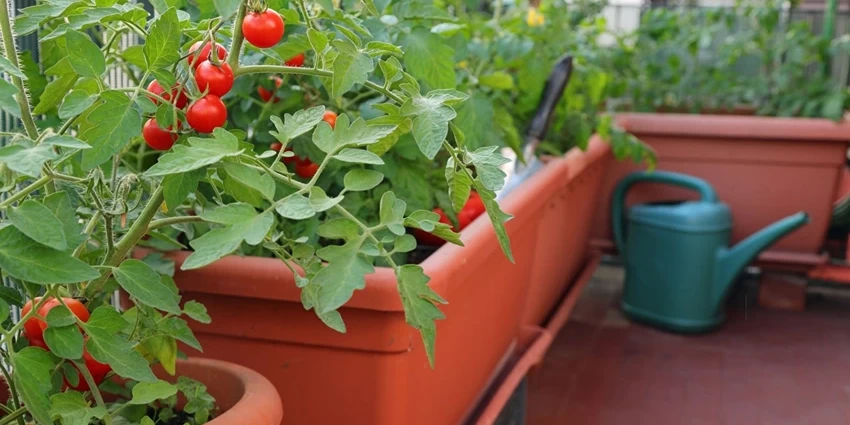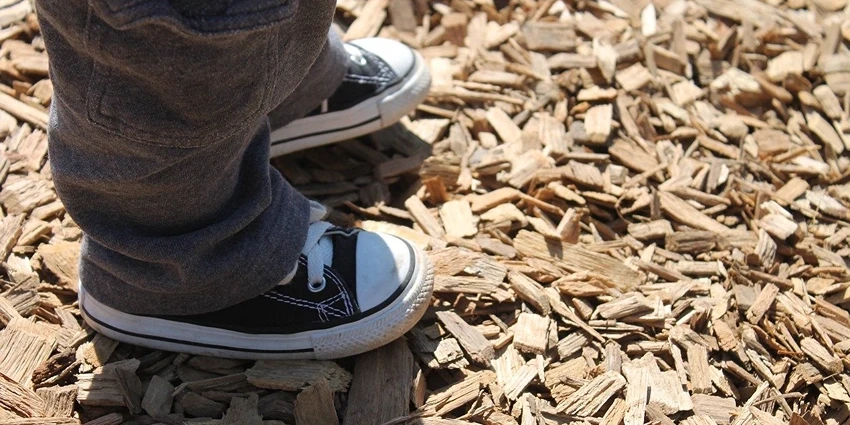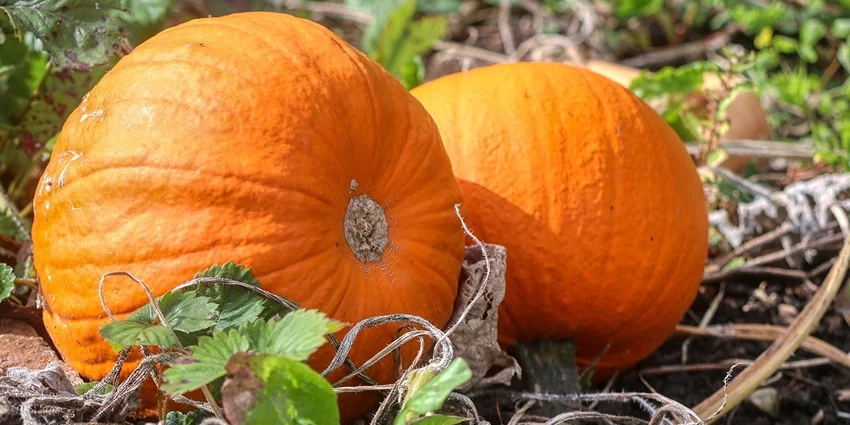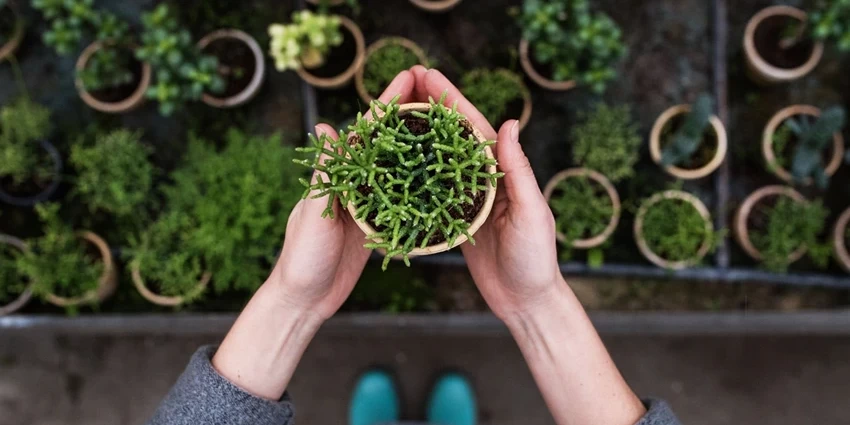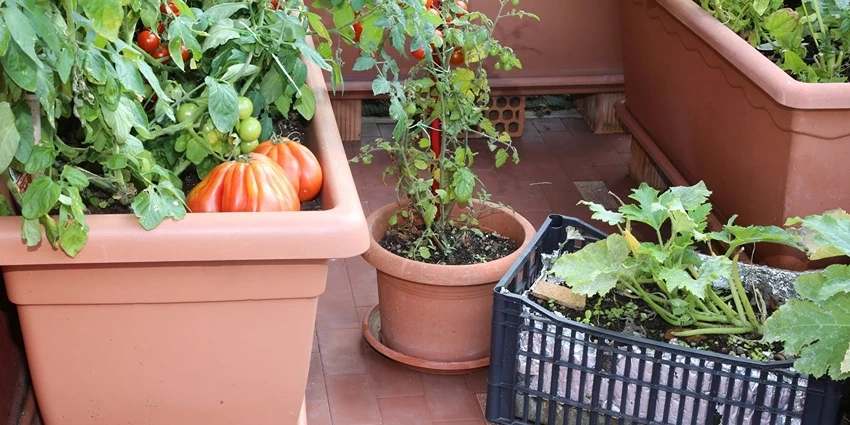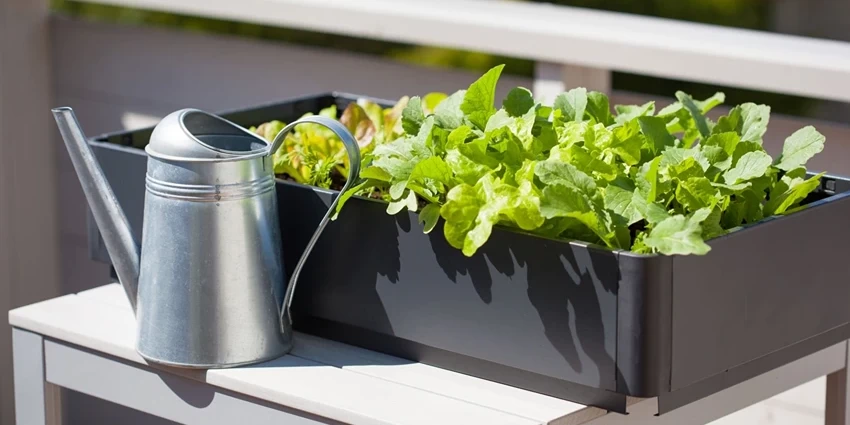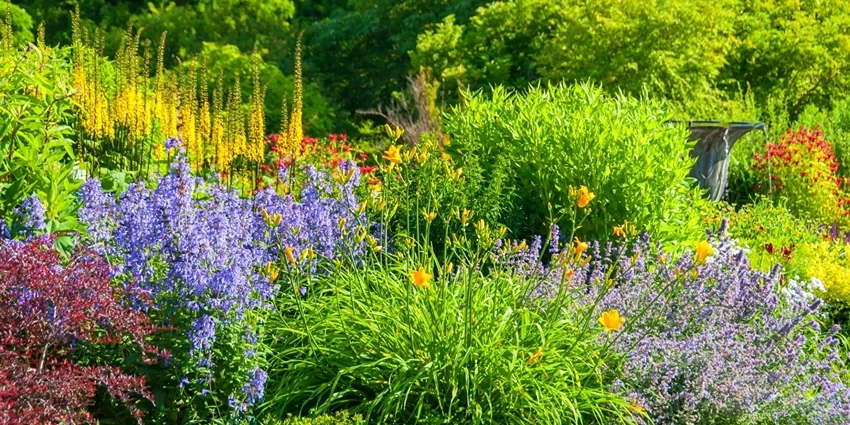All products were chosen independently by our editorial team. This review contains affiliate links and we may receive a commission for purchases made. Please read our affiliates FAQ page to find out more.
Home » Gardening Practices » Organic Gardening and Water Conservation
Gardening enthusiasts often find themselves limited by space, but with container vegetable gardening, you can turn even the smallest spaces into a flourishing garden. This method of gardening is not only space-efficient but also offers flexibility and ease, making it an ideal choice for urban dwellers and those with limited garden space.
Register for our latest in-depth reviews and product round-ups from the experts.
Enter your email address below to receive our monthly review emails.
By entering your details, you are agreeing to our terms and conditions and privacy policy. You can unsubscribe at any time.
Container vegetable gardening is a vibrant and practical way to grow your own food, regardless of your living situation. It’s a method that brings the joy of gardening to everyone, from city balconies to suburban backyards.
Why Choose Container Vegetable Gardening?
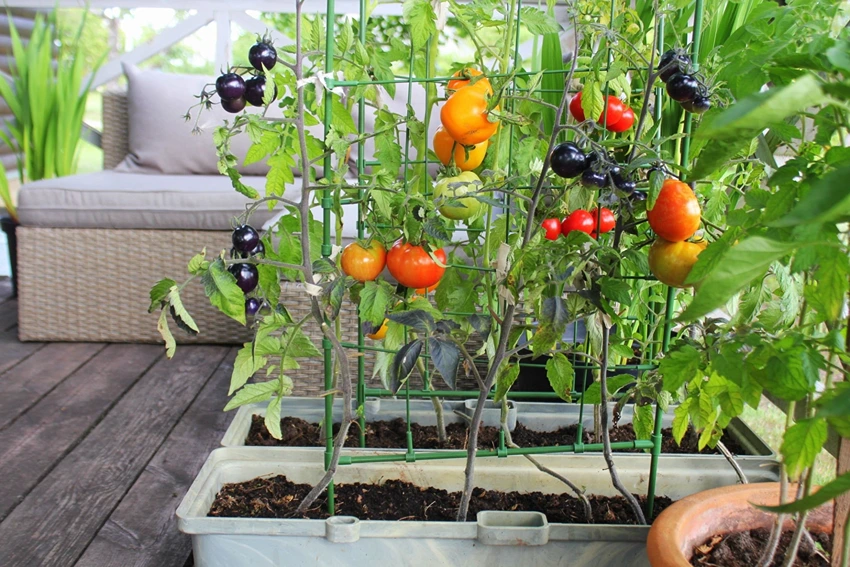
Space and Flexibility
- Adaptable to Any Space: Whether you have a small balcony, a patio, or just a sunny windowsill, container gardening fits into any space.
- Mobility: Containers can be moved to catch the sun, avoid pests, or simply to change the look of your space.
Control Over Growing Conditions
- Soil Quality: You have complete control over the soil your vegetables grow in, ensuring they have the best possible conditions.
- Watering and Drainage: Containers allow for precise watering and excellent drainage, reducing the risk of overwatering.
Reduced Pest Problems
- Elevated Position: Being off the ground, containers are less prone to certain pests.
- Barrier to Soil-Borne Diseases: Containers can prevent diseases that are commonly found in garden soil.
Choosing the Right Containers
Choosing the right Containers is crucial for both plant health and ease of gardening. Similarly, selecting the best charcoal BBQ is essential for those who love to combine their love for gardening with outdoor cooking.
Material Matters
- Clay and Ceramic Pots: Aesthetic but heavy and prone to drying out.
- Plastic and Fiberglass: Lightweight and retain moisture well, but can become hot in direct sunlight.
- Wooden Containers: Natural look, but ensure they are treated to prevent rot.
Size and Depth
- Deep Containers for Root Vegetables: Carrots and potatoes need depth to grow.
- Shallow Containers for Herbs and Salads: Lettuces, herbs, and other shallow-rooted plants thrive in less depth.
Drainage is Key
- Adequate Drainage Holes: Essential to prevent waterlogging.
- Trays for Indoor Gardening: Protect your floors and surfaces.
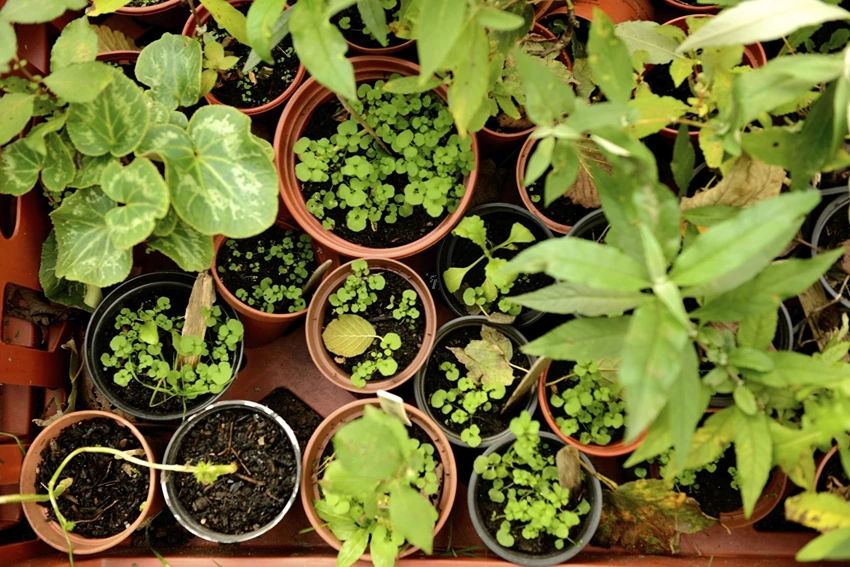
What to Grow in Your Container Garden
Best Vegetables for Containers
- Tomatoes: Choose bush or dwarf varieties for best results.
- Peppers and Chillies: Thrive in warmer conditions.
- Salad Leaves: Quick to grow and can be harvested repeatedly.
- Herbs: Ideal for small spaces and have the added benefit of being useful in the kitchen.
Understanding Sunlight Needs
- Full Sun Vegetables: Tomatoes, peppers, and aubergines need around 6-8 hours of sunlight daily.
- Partial Shade Tolerant: Lettuces and herbs can tolerate less direct sunlight.
Soil and Fertilization for Healthy Growth
Choosing the Right Soil
- Potting Mix: Use a high-quality potting mix, not garden soil.
- Nutrient-Rich: Ensure the mix is fortified with compost or well-rotted manure.
Fertilization
- Regular Feeding: Container plants need more frequent feeding than those in the ground.
- Liquid Fertilizers: Easy to apply and can be tailored to the plant’s growth stage.
Watering: Keeping Your Plants Hydrated
Consistent Moisture
- Regular Watering: Containers dry out faster, especially in hot weather.
- Self-Watering Containers: A great option for maintaining consistent moisture levels.
Avoiding Common Watering Mistakes
- Overwatering: Can lead to root rot.
- Underwatering: Stresses the plants and can reduce yield.
Pest and Disease Management
Keeping Pests at Bay
- Regular Checks: Look out for signs of pests and deal with them promptly.
- Natural Predators: Encourage beneficial insects that prey on common pests.
Disease Prevention
- Good Air Circulation: Prevents fungal diseases.
- Clean Containers: Start with clean containers to reduce disease risk.
Container vegetable gardening is a delightful and rewarding way to grow your own food. It’s a method that brings the joy of gardening to everyone, from city balconies to suburban backyards. With the right containers, soil, and care, you can enjoy a bountiful harvest from your very own container garden.
Advanced Tips for a Thriving Container Garden
Utilising Garden Tools
In the context of organic gardening and water conservation, a garden fork tool plays a crucial role by aerating the soil, improving water infiltration and retention, and reducing the need for frequent watering, thereby supporting sustainable gardening practices. Read our garden fork guide here.
Seasonal Planting for Continuous Harvest
- Succession Planting: Rotate crops to have a continuous supply of vegetables.
- Seasonal Varieties: Choose plants according to the season for best growth.
Companion Planting in Containers
- Beneficial Combinations: Pair plants that support each other’s growth.
- Pest Deterrents: Some plants can naturally repel pests when grown together.
Vertical Gardening: Maximizing Space
- Trellises and Climbing Frames: Ideal for vining plants like cucumbers and peas.
- Hanging Baskets: Perfect for trailing plants like cherry tomatoes and strawberries.
Creative Container Ideas
Repurposing Household Items
- Old Buckets and Baskets: Can be transformed into unique planters.
- Pallet Planters: Great for creating a vertical garden.
Aesthetic Arrangements
- Colorful Containers: Add a splash of color to your garden.
- Themed Gardens: Create a culinary herb garden or a salad garden in separate containers.
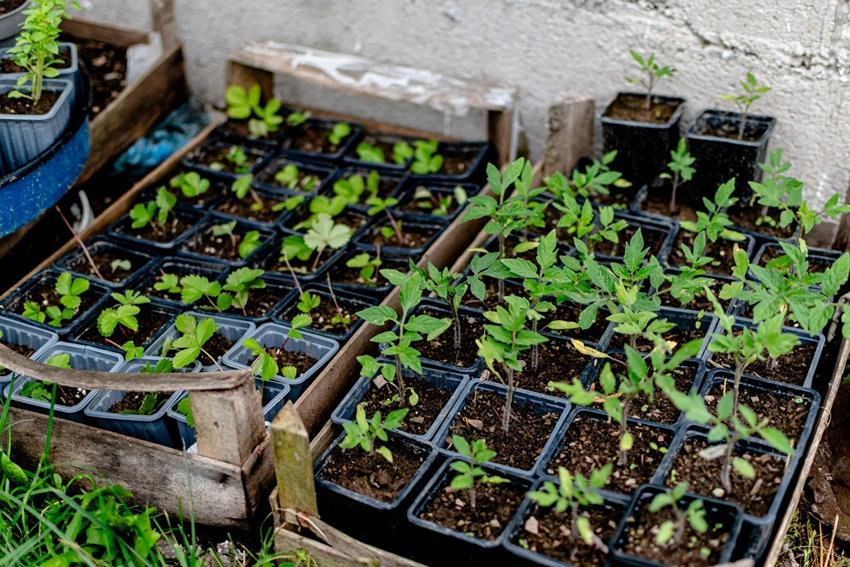
Table: Ideal Plants for Container Gardening
| Vegetable Type | Container Size | Sunlight Requirement | Watering Frequency |
| Tomatoes | Medium to Large | Full Sun | Daily |
| Peppers | Medium | Full Sun to Partial | Every 2-3 Days |
| Salad Greens | Shallow | Partial Shade | Daily |
| Herbs | Small to Medium | Full Sun to Partial | When Soil is Dry |
| Root Vegetables | Deep | Full Sun | Every 2-3 Days |
Watering and Feeding for Optimal Growth
Gardening Tools
Using a bulb planter in organic gardening not only aids in precise planting but also promotes water conservation by ensuring bulbs are planted at an optimal depth to reduce water waste and improve water efficiency in the garden. Read our guide to bulb planters here.
Smart Watering Techniques
- Drip Irrigation Systems: Efficient and consistent watering.
- Mulching: Helps retain moisture and reduce watering frequency.
Tailored Nutrition
- Slow-Release Fertilizers: Provide a steady supply of nutrients.
- Organic Options: Compost teas and worm castings for natural feeding.
Pest and Disease Control: Advanced Strategies
Integrated Pest Management (IPM)
- Biological Controls: Use of natural predators or beneficial insects.
- Barriers and Traps: Physical methods to prevent and control pests.
Disease Management
- Rotation of Crops: Avoid planting the same family of plants in the same container consecutively.
- Use of Resistant Varieties: Choose plant varieties that are less prone to diseases.
Frequently Asked Questions
It depends on the weather and the type of plants. Generally, containers need watering once a day during hot weather. Always check the soil moisture before watering.
It’s not recommended. Garden soil can be heavy and may contain pests and diseases. Use a high-quality potting mix instead.
Observe your plants. If they are leggy or pale, they might need more sunlight. Most vegetables need 6-8 hours of direct sunlight.
Tomatoes, peppers, salad greens, and herbs are great choices. Root vegetables like carrots and radishes also do well in deep containers.
Regularly inspect your plants, use natural deterrents like neem oil, and encourage beneficial insects. Physical barriers like netting can also be effective.
Oliver, a creative powerhouse and gardening enthusiast, brings a unique blend of scientific knowledge and artistic flair to BritishGreenThumb.co.uk. Growing up in the vibrant city of Brighton, Oliver's earliest memories involve exploring the city's picturesque parks and gardens, which sparked his lifelong passion for horticulture.


